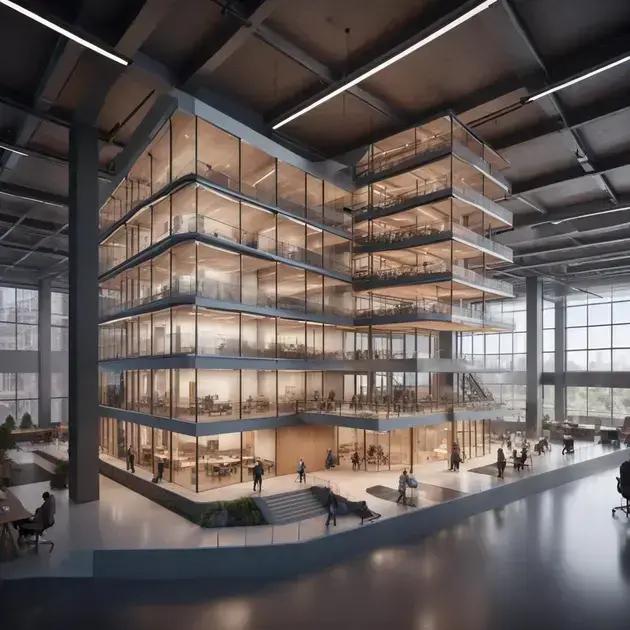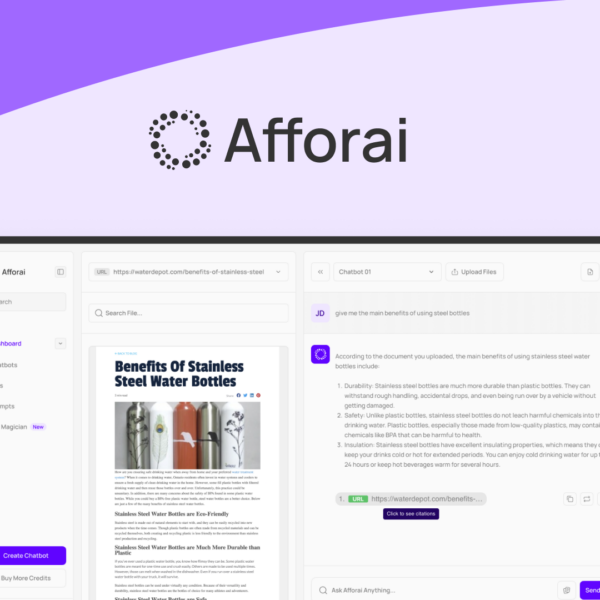Have you ever wondered how the future of buildings is taking shape? AI in smart buildings is not just a trend; it’s a game-changer that’s reshaping how we design, manage, and live in spaces. Imagine walking into a building that knows your preferences, adjusts the lighting according to your mood, or proactively addresses maintenance issues. This is the power of AI, and understanding its potential is crucial for anyone interested in the future of architecture and urban development.
Introduction to AI in Smart Buildings
Artificial Intelligence (AI) is significantly changing the landscape of smart buildings. These technological advancements are making our living and working environments more efficient and sustainable. Smart buildings use AI to automatically adjust settings, be it for climate control, energy consumption, or light levels. This creates comfortable spaces while reducing waste.
What are Smart Buildings?
Smart buildings are structures equipped with advanced systems that utilize IoT (Internet of Things), automation, and AI technology. These features work together to monitor and control various building operations. As a result, they provide enhanced comfort, security, and efficiency for occupants.
Applications of AI in Smart Buildings
AI can perform numerous essential tasks within smart buildings:
- Energy Management: AI analyzes energy use patterns and optimizes resource allocation, leading to lower utility costs.
- Security Systems: AI enhances surveillance and monitoring, improving safety and incident response.
- Predictive Maintenance: AI can predict when a building system might fail, allowing for maintenance before issues arise.
These applications demonstrate how AI makes buildings not just smarter but also more adaptive to users’ needs.
Benefits of Integrating AI in Building Design
Integrating AI into the design of new buildings can lead to several advantages:
- Enhanced Comfort: AI systems can learn user preferences, adjusting lighting, heating, or cooling automatically.
- Increased Efficiency: Streamlined operations save money and resources, benefiting both the environment and the budget.
- Data-Driven Decisions: AI provides actionable insights based on real-time data analysis, assisting in effective management.
Design Efficiency: How AI Enhances Building Design

AI greatly improves building design efficiency by enabling architects and engineers to optimize various aspects of their projects. It allows for innovative solutions that prioritize efficiency and sustainability while meeting user needs. With its capability to analyze vast amounts of data, AI offers insights that lead to better design outcomes.
Streamlined Design Processes
With traditional methods, designing a building can take a long time. AI streamlines the process by automating repetitive tasks. Here are some ways AI aids in design:
- Automating Drafting: AI tools can quickly generate floor plans and layouts, reducing the time architects spend on initial designs.
- 3D Modeling: AI can create detailed 3D models from 2D drawings, helping to visualize the final product.
- Real-Time Feedback: Using AI software, designers receive immediate feedback on their choices, allowing for quick adjustments.
This efficiency allows design teams to focus on creativity and innovation rather than mundane tasks.
Data-Driven Design Decisions
AI leverages data to inform design choices effectively. By analyzing data from past projects and user behavior, AI helps architects consider factors like:
- Energy Efficiency: AI identifies the best materials and layouts to minimize energy consumption.
- Occupant Comfort: AI analyzes user data to provide insights on improving indoor environments, such as optimal lighting and temperature.
- Cost Estimation: AI helps predict project costs more accurately, ensuring budgets are met.
These data-driven decisions enhance the overall functionality and satisfaction of smart buildings.
Collaboration and Communication
AI fosters collaboration among project stakeholders. By providing a centralized platform for design data, AI tools facilitate communication among:
- Architects: They can share designs and get feedback instantly.
- Engineers: They can collaborate effectively on systems integrations.
- Clients: They can visualize the design and make informed choices.
This collaborative approach leads to smarter solutions and more refined building designs, ensuring that all parties have a stake in the process.
Building Management: AI for Easier Operations
Building management is becoming increasingly efficient with the integration of AI technology. AI helps streamline operations and enhances the experience for occupants and managers alike. This section discusses how AI simplifies various aspects of building management.
Automated Systems Monitoring
AI technology continuously monitors building systems, ensuring they operate smoothly. Key features include:
- HVAC Control: AI optimizes heating, ventilation, and air conditioning systems based on occupancy and weather data.
- Lighting Management: AI adjusts lighting levels throughout the day to maximize energy savings while maintaining comfort.
- Security Monitoring: AI analyzes surveillance footage in real-time, detecting unusual activities and alerting security personnel.
This kind of automation ensures that building systems run efficiently, reducing the need for manual oversight.
Predictive Maintenance
Predictive maintenance powered by AI is a game-changer for building management. It uses data from sensors and past performance to predict when systems might fail. Benefits include:
- Reduced Downtime: By predicting failures, maintenance can be scheduled before issues arise, keeping the building operational.
- Cost Savings: Timely maintenance helps avoid expensive repairs and prolongs the lifespan of equipment.
- Improved Safety: Regular updates ensure that all systems meet safety standards, reducing risks for occupants.
This proactive approach ensures that issues are addressed before they become major problems.
Enhanced Energy Efficiency
AI greatly contributes to energy efficiency in buildings. It helps manage resources better and promotes sustainability through:
- Energy Consumption Analysis: AI analyzes energy use patterns to identify waste and suggest improvements.
- Smart Scheduling: AI systems can schedule energy-intensive tasks when demand is lower, saving costs.
- Real-Time Adjustments: By learning user habits, AI makes automatic adjustments to reduce energy use without sacrificing comfort.
These efficiency measures not only reduce operating costs but also contribute to a greener environment.
The Future of Smart Buildings with AI Integration

The future of smart buildings is bright, particularly with the integration of AI technologies. This transformation is paving the way for more intelligent, efficient, and responsive building environments that meet the needs of occupants and facility managers alike.
Emerging Trends in AI Integration
As AI continues to evolve, it brings about new trends that enhance smart buildings:
- Self-Learning Systems: New AI systems can learn from occupant behavior, adjusting environmental controls for maximum comfort and efficiency.
- Interconnected Devices: AI enables various building systems to communicate seamlessly, improving overall functionality and data analysis.
- AI-Driven Design Tools: Emerging AI technologies assist architects and engineers in designing smarter buildings that are more energy-efficient and user-friendly.
These trends indicate a shift toward buildings that are not only smart but also intuitive.
Environmental Sustainability
Sustainability is a major focus for future smart buildings. AI integration helps drive green initiatives through:
- Energy Optimization: AI systems monitor real-time energy consumption and make adjustments to minimize waste.
- Water Conservation: AI analyzes usage patterns and suggests improvements for water management in buildings.
- Environmental Impact Analysis: AI tools assess a building’s environmental footprint, guiding sustainable practices.
These sustainability efforts contribute to creating healthier environments for both people and the planet.
Enhanced User Experience
AI integration aims to improve the user experience in smart buildings through:
- Personalized Environments: AI tailors settings like lighting and temperature based on individual preferences.
- Seamless Connectivity: Smart building users benefit from integrated systems that offer convenience and enhanced functionality.
- Improved Safety Features: AI enhances security systems by identifying suspicious activity and responding quickly to potential threats.
This focus on user experience ensures that occupants feel comfortable and secure in their environments.
Future Innovations
Looking ahead, several innovations are anticipated to shape the role of AI in smart buildings:
- Smart Energy Grids: Vehicles and buildings may interact with energy grids to optimize power consumption based on demand.
- Advanced Predictive Maintenance: AI will enhance predictive analytics, allowing for even greater efficiency in maintaining building systems.
- AI-Enhanced Decision Making: AI tools will provide building managers with real-time insights, aiding in better decision-making processes.
These innovations reveal a future where smart buildings become increasingly integrated into urban planning and community design.
Conclusion: Embracing AI for Smart Building Success
As we explore the world of smart buildings, the importance of adopting AI technology becomes even clearer. AI is integral in driving the success of modern buildings, enhancing efficiency, comfort, and sustainability.
The Role of AI in Smart Building Design
AI influences design decisions by:
- Analyzing User Preferences: AI collects data on occupancy and user behavior to create more tailored designs that meet the needs of occupants.
- Optimizing Space Usage: AI can determine the most effective layout for maximizing usability within the building while ensuring safety and comfort.
- Energy Efficiency Solutions: AI suggests design elements that improve energy use, reducing costs and environmental impact.
This role of AI in design sets the stage for smarter operational strategies.
Operational Benefits of AI
Integrating AI into smart buildings enhances operational efficiency through:
- Automated Control Systems: AI automates systems management such as heating, cooling, and security, allowing them to operate at peak efficiency.
- Advance Predictive Maintenance: AI enables building managers to foresee potential system failures, reducing downtime and repair costs.
- Real-Time Performance Monitoring: AI continuously monitors systems and provides insights, ensuring that operations align with set goals.
These operational enhancements lead to improved performance and reduced operational costs.
AI’s Influence on Sustainability
The smart building concept aligns closely with sustainable practices, aided by AI:
- Efficient Resource Management: AI optimizes energy and water usage, leading to significant reductions in utility bills and resource waste.
- Data-Driven Environmental Impact: AI measures the building’s carbon footprint, offering insights to help achieve sustainability goals.
- Support for Green Certifications: AI tools can help buildings meet the criteria for various green certifications like LEED.
Embracing AI helps create structures that are environmentally friendly and cost-effective.
Future Innovations with AI in Smart Buildings
Looking ahead, several advancements in AI are likely to further transform smart buildings:
- Enhanced User Interactions: Future smart buildings may offer even more personalized experiences through AI that learns from interactions over time.
- Integration with Smart Cities: AI will play a crucial role in linking smart buildings with intelligent city ecosystems, enhancing overall urban living.
- Development of Autonomous Systems: Continuous advancements may lead to fully autonomous building operations, increasing efficiency without human intervention.
As technology evolves, the capabilities of AI in smart buildings will expand, driving further improvements.




